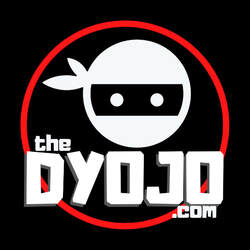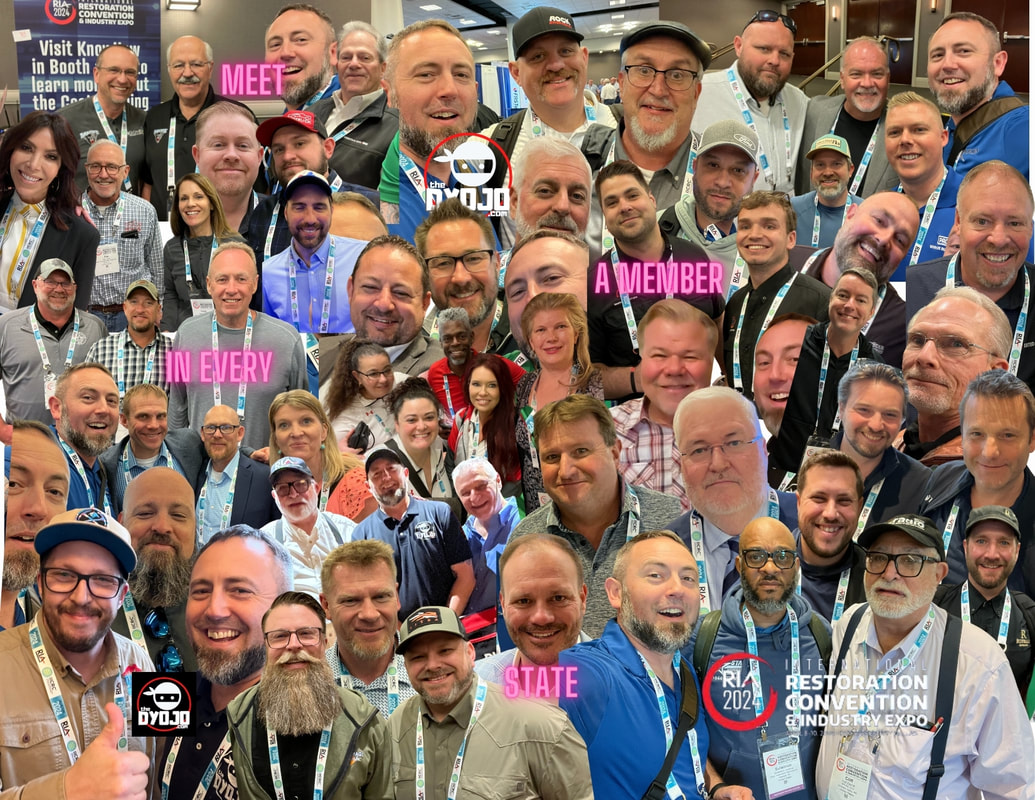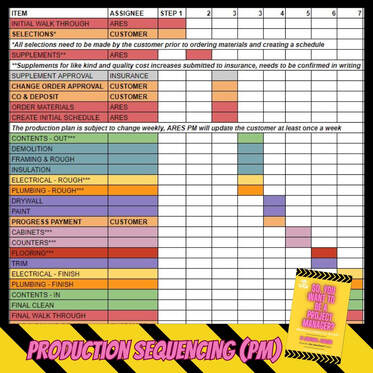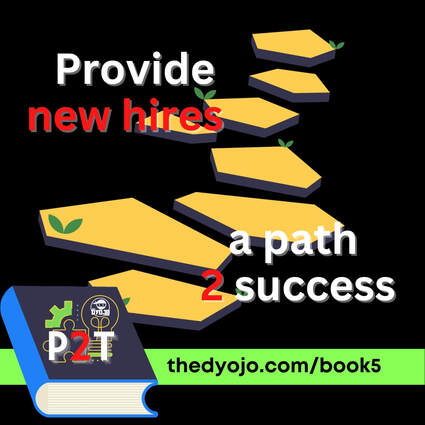|
How does a consumer know whether a contractor is competent enough to complete remodeling and repair work? Author Ron Alford provides insights into the four types of contractors in his book, designed for property owners, titled How to Win the Insurance Claim Game (available on Amazon). In this video we review those four types of contractors, Ron's tests of competence, and how the consumer can better protect themselves when hiring a construction professional. This discussion is also helpful to business owners and managers looking to elevate their team's abilities to seek, sell, and produce quality projects.
0 Comments
The water damage response and repair industry has emerged into the consumer discourse. But how many property restoration contractors are aware of the rich history of innovation and collaboration that have laid the groundwork their livelihood? In this episode we take a field trip into the past with Ron "Alfie" Alford and complete our recap of RIA 2024 with Ed Cross. In Episode 118 of The DYOJO Podcast 0:00 The 5th Water Damage Air Mover Made 12:49 Robust Conversations with Xactimate 18:16 History and Headway with the AGA 28:00 Becoming a Class A Contractor with Ron Alford References and guest appearances for this episode include: Sgt Ed from Restoration Crosscheck, video from Ron Alford, Cliff Zlotnik, Jim Thompson, Mark Springer, Katie Smith, excerpts from Ron Alford's book How To Win The Insurance Claim Game (available on Amazon), prior episodes of The DYOJO Podcast. The DYOJO Podcast for Contractors
New episodes are released on Thursdays at 12:01am PST We recap some of the highlights from the Restoration Industry Association (RIA) Convention and Expo with our friend Ed Cross. Items of interest for property restoration contractors include an apology from the stage by Xactimate/Verisk and a face the advocate with four TPAs from the insurance claims ecosystem; Contractor Connection, Alacrity, Sedgewick, and Westhill. In Episode 117 of The DYOJO Podcast 0:00 Sgt Ed Cross 2:23 Recap of Episode 116 3:20 Waste Diversion Tracking 4:31 Insurance Denied by Drone 6:09 New Position Statements from RIA 9:46 Xactimate Apologizes to Restorers 16:32 Weaponizing Xactimate 24:28 RIA 2024 Highlights Clips were used in this Episode from
* InsurTech Trends, Integrations, Pricing, & More - C&R Magazine / Restoration Today Michelle Belvins interviews Aaron Brunko - https://www.youtube.com/watch?v=7E0Ja... * Restoration Invoice: PAID - Restoration CrossCheck (Sgt Ed video) - https://www.youtube.com/watch?v=PVSUe... QUESTIONS: Are there restoration contractors in Rhode Island or South Dakota? Read the article in C&R Magazine Watch the recap video on The DYOJO YouTube Jon Isaacson had the honor of being selected to present The 3 P's of Project Management for multiple construction tradeshows this year. Friday, February 2, 2024 Pete Consigli's Winter Break 2024 (Naples, Florida) Jon Isaacson is Speaking on The 3 P's of Project Management for Construction Professionals Thursday, February 29, 2024 11:15 AM – 11:45 AM National Association of Home Builders (NAHB) International Builders Show (Vegas, Nevada) Jon Isaacson is Speaking on The 3 P's of Project Management for Construction Professionals Wednesday, April 10, 2024 10:45 AM to 11:30 AM CT Restoration Industry Association (RIA) Annual Conference and EXPO (Dallas, Texas) Jon Isaacson is Speaking on The 3 P's of Project Management for Restoration Professionals During these presentations, Jon shares from his over twenty years of experience in the skilled trades. He also shares principles from his third book, So, You Want to be a Project Manager? The 3 P's presentation reviews the traditional metrics of project management which require an organization to bring projects to completion ON scope, ON budget, and ON schedule. As the discussion progresses, Jon helps owners, managers, and construction professionals better prepare for consistent outcomes with the dynamics of project management. In addition to those core competencies, modern professionals have to always be learning to improve their skills with People, Process, and Projects (The 3 P's). The two resources that attendees most ask for after the attend the 3 P's of Project Management presentations are The DYOJO Production Sequencing and Project Tracking spreadsheets (see images above). If the reader is interested in these resources they should check out Jon's books, So, You Want to be a Project Manager (production sequencing) and How to Suck Less at Estimating (project tracking). How to Suck Less at Estimating is also a six module course available through Restoration Technical Institute. Contact The DYOJO today to discuss these resources.
Tradeshows are an excellent way to expand your knowledge and your network. Industry expos can also be socially awkward. Meeting new people can be harrowing. This is true whether you have been to several large events or you are attending your first convention. One creative way I have found to force myself to meet new people is to try to meet a member from every state at larger industry events. This practice gives me a goal, forces me out of my shell, and has opened up some fun conversations. READ MORE: C&R Article - Embracing the Social Awkwardness of Industry Tradeshows WATCH the video recap (Below) Tradeshows are an excellent way to expand your knowledge and your network. Industry expos can also be socially awkward. To maximize professional value you must embrace social awkwardness by pushing through personal discomfort. Be intentional to move yourself from attendee to participant. One creative way I have found to force myself to meet new people is to try to meet a member from every state at larger industry events. This practice gives me a goal, forces me out of my shell, and has opened up some fun conversations. A few suggestions to help professionals embrace social awkwardness and harvest more value from industry events:
|
Words
The DYOJO - helping contractors shorten Archives
June 2024
Categories
All
EstimatingMarketingInsurance ClaimsLeadership |
|
| |||||||






 RSS Feed
RSS Feed
